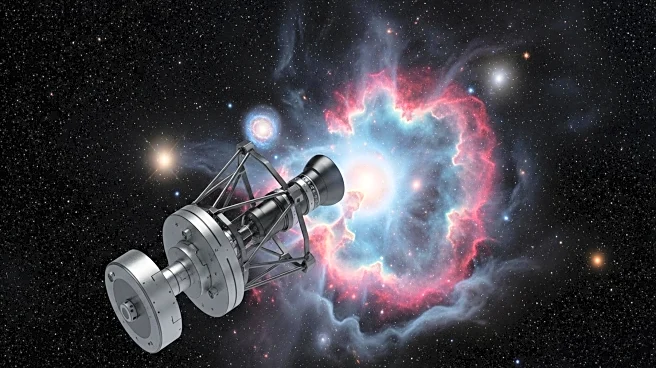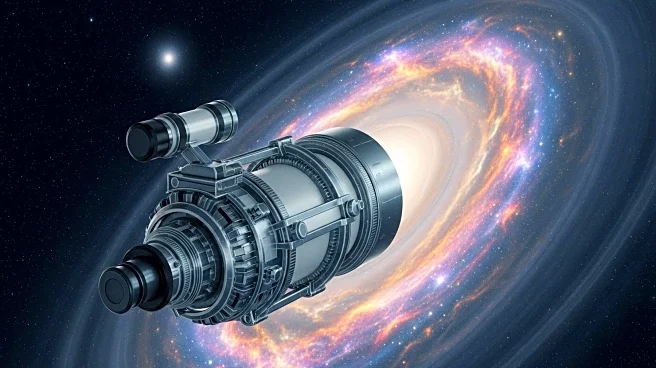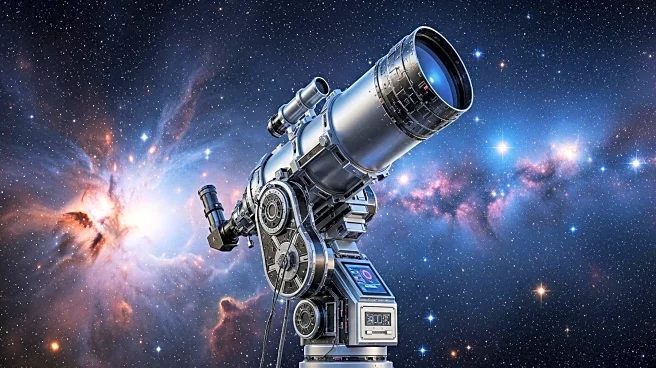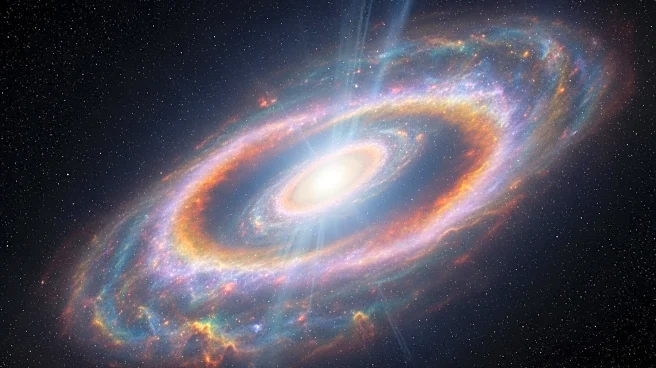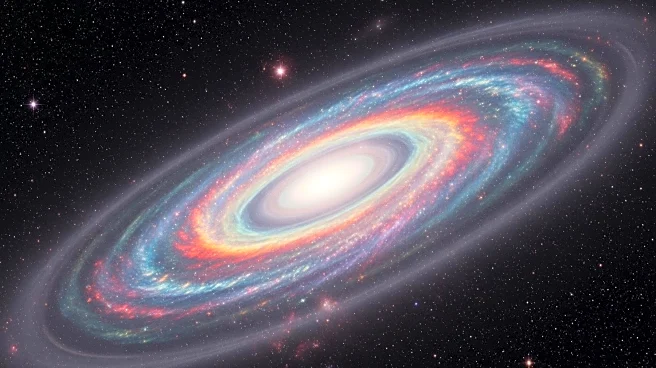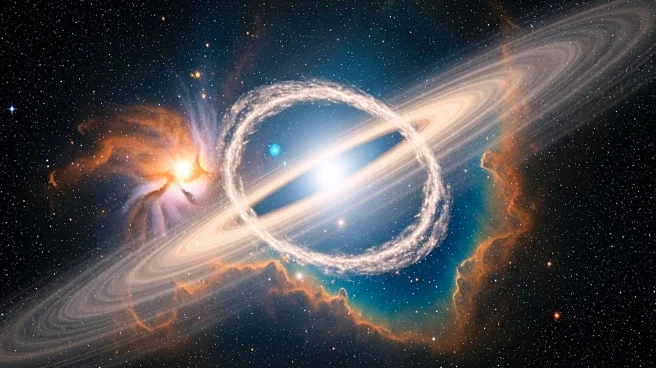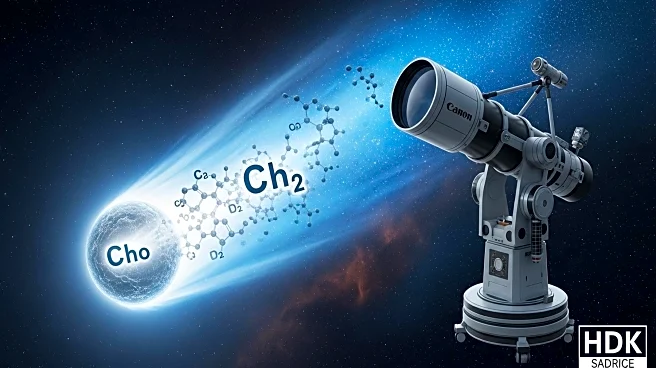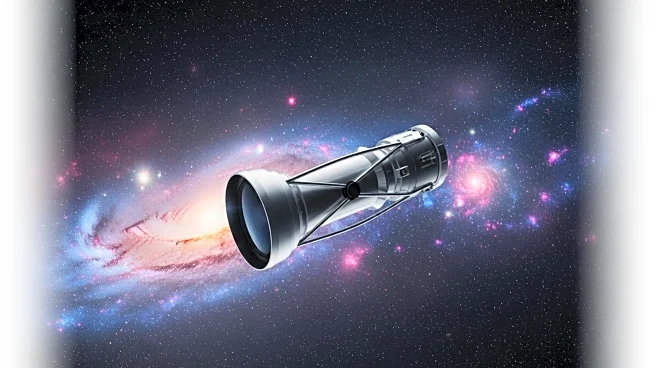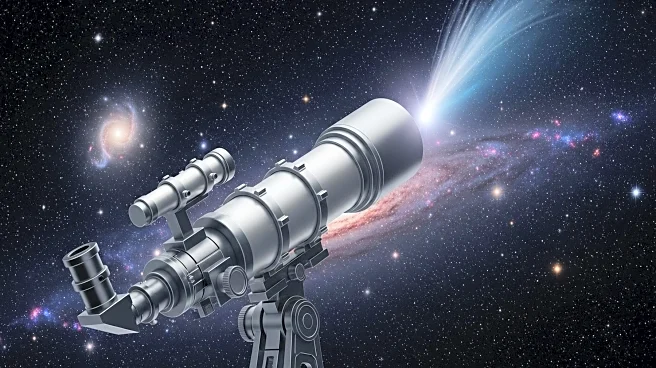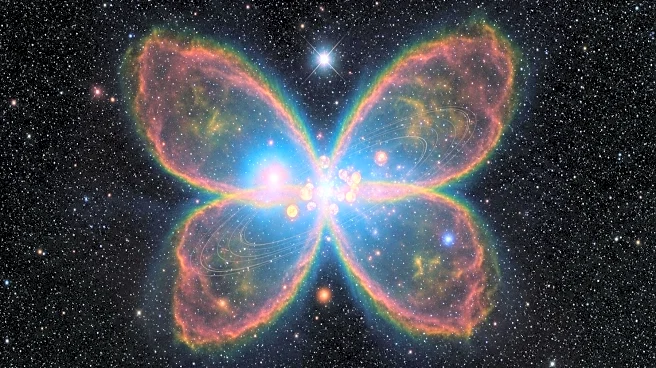What's Happening?
Astronomers using the James Webb Space Telescope have discovered a planet-forming disk with an unusually high concentration of carbon dioxide, challenging existing theories of planetary chemistry. The disk, located in the massive star-forming region NGC 6357, is nearly devoid of water, which is typically abundant in such environments. This discovery suggests that intense ultraviolet radiation from nearby stars may be altering the chemical composition of the disk. The findings, led by Jenny Frediani at Stockholm University, reveal isotopic variants of carbon dioxide that could provide insights into the origins of meteorites and comets.
Why It's Important?
This discovery has significant implications for our understanding of planetary formation and the diversity of planetary atmospheres. The presence of high levels of carbon dioxide in a planet-forming region suggests that cosmic environments can drastically reshape the building blocks of planets. As most stars and planets form in such radiation-rich regions, understanding these effects is crucial for assessing the habitability potential of emerging planetary systems. The findings could also help resolve longstanding questions about the isotopic fingerprints found in meteorites and comets, offering new perspectives on the formation of our Solar System.
What's Next?
Further research is needed to explore the impact of extreme radiation environments on planet formation. The James Webb Space Telescope's capabilities will allow astronomers to study similar disks in other star-forming regions, providing a broader understanding of the environmental diversity that shapes planetary systems. The study's findings may lead to revisions in current models of disk chemistry and evolution, prompting new investigations into the role of ultraviolet radiation in planetary formation. Collaborative efforts among astronomers and institutions will be essential to advance this field of study.
Beyond the Headlines
The discovery highlights the importance of advanced astronomical tools like the James Webb Space Telescope in expanding our knowledge of the universe. The ability to observe distant, dust-enshrouded disks with unprecedented detail opens new avenues for understanding the physical and chemical conditions that govern planet formation. This research underscores the interconnectedness of cosmic phenomena and their influence on planetary development, emphasizing the need for interdisciplinary approaches in astronomy and astrophysics.
